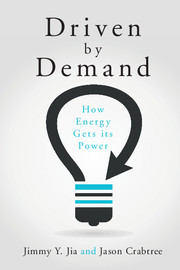Book contents
- Frontmatter
- Dedication
- contents
- List of figures
- List of tables
- Acknowledgments
- Part I Introduction
- Part II Three frameworks
- Part III Critical decisions
- 5 The International Niagara Commission of 1891
- 6 Trash as treasure
- 7 Paying for pavement
- 8 Heat without the hot air
- 9 The collision of two critical infrastructures
- Part IV Energy futurism
- Part V Societal advancement
- References
- Index
6 - Trash as treasure
from Part III - Critical decisions
Published online by Cambridge University Press: 05 June 2015
- Frontmatter
- Dedication
- contents
- List of figures
- List of tables
- Acknowledgments
- Part I Introduction
- Part II Three frameworks
- Part III Critical decisions
- 5 The International Niagara Commission of 1891
- 6 Trash as treasure
- 7 Paying for pavement
- 8 Heat without the hot air
- 9 The collision of two critical infrastructures
- Part IV Energy futurism
- Part V Societal advancement
- References
- Index
Summary
American cities are like badger holes, ringed with trash—all of them—surrounded by piles of wrecked and rusting automobiles, and almost smothered in rubbish. Everything we use comes in boxes, cartons, bins, the so-called packaging we love so much. The mountain of things we throw away is much greater than the things we use.
John Steinbeck, Travels with Charley: In Search of America, 1962The Italian city of Naples is well known for its waste management crisis that began in the mid-1990s and continues to re-erupt every few years. During the initial crisis, most landfills were already over capacity, and municipal workers refused to collect trash. The garbage piled up on the streets and caused rampant discontent among the citizens. Even the Italian prime minister, Silvio Berlusconi, became embroiled in this municipal issue. Disruptions to waste management processes can occur because of human action or because of dependence on energy infrastructure. In a number of places, waste management processes also feed back into energy infrastructure via various types of electric generation. Waste management and energy infrastructures, especially electricity, are examples of commonly co-dependent systems.
Most of what we buy—from pens to computers to dishwashers—is eventually thrown away. This trash gathers in large landfills where the embodied energy of the goods is not put to use. Proper waste management is a critical component of any society's well-being. A well-run waste management system keeps a city clean—crucial to dense environments remaining both pleasant and hygienic. Waste management is also an important part of an end-to-end energy strategy. Yet, removing trash from a city merely shifts the problem to someplace else. Storing trash in landfills outside of a city removes the problem from dense population centers but leaves toxic chemicals behind that can still leach into potable water supplies if a liner fails.
- Type
- Chapter
- Information
- Driven by DemandHow Energy Gets its Power, pp. 109 - 127Publisher: Cambridge University PressPrint publication year: 2015



